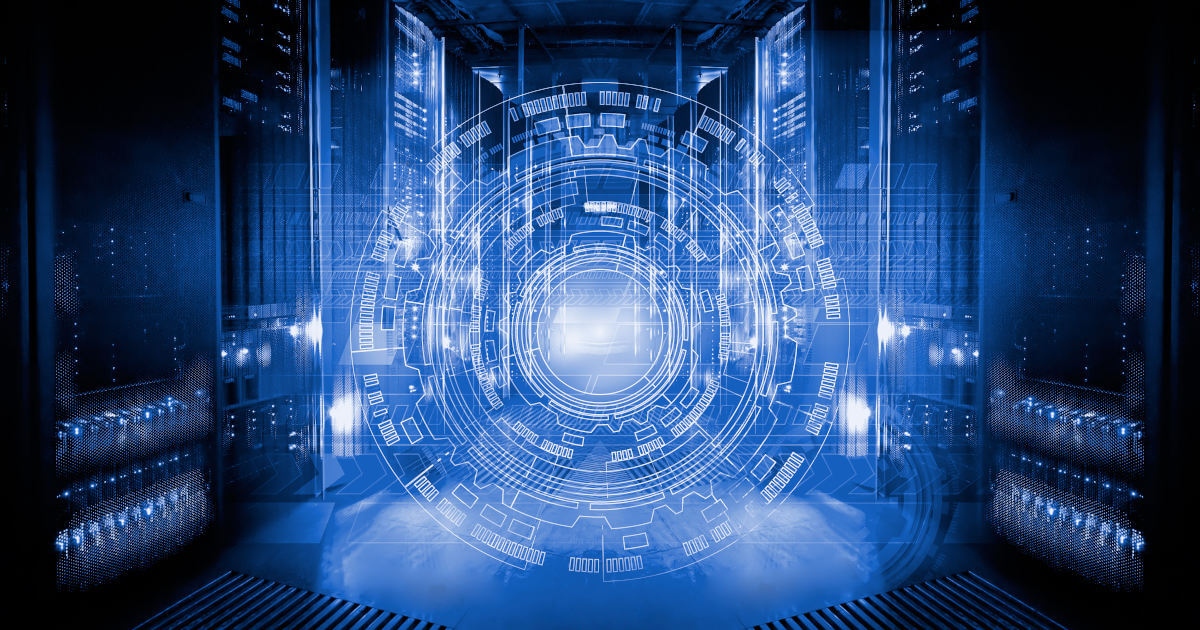Machine-to-machine communication (M2M) – definition, characteristics, and advantages
Machine-to-machine, or M2M for short, refers to the automated exchange of information between devices without manual intervention by humans. Machine-to-machine technology is used for a wide range of applications, from monitoring and controlling machines to the indexing of websites by search engines.
Intelligent machines can exchange information without human assistance and even coordinate and perform actions. In this article, you’ll learn the basics of M2M communication, including how it came about, how it works, and when and where it is used. Discover the advantages of this technology for your own business.
M2M communication – definition and history
Machine-to-machine is a broad term. Most definitions of M2M focus on particular aspects and ignore other key points.
One succinct definition of machine-to-machine communication is as follows:
‘Machine-to-machine (M2M) communications means the largely automated exchange of information between technical devices themselves, for example, machines, vending machines, vehicles, or measuring equipment (e.g. electricity, gas and water meters), or between the devices and a central data processing unit.’ – Source: https://www.bundesnetzagentur.de/EN/Areas/Telecommunications/Companies/NumberManagement/M2M/M2M_node.html
Although M2M usually does not involve human assistance, the cited definition does not rule out limited human intervention.
Other definitions of M2M focus on technical aspects and how this type of communication works. According to these definitions, machine-to-machine refers to a device that detects an event and forwards it to an application via a network. This application then translates the transmitted event into understandable information.
History of machine-to-machine communication
The exchange of information between machines dates back to the early 20th century. At that time, information was only transmitted over cables. In the late 1920s, telemetry emerged, making it possible to send measurements from a sensor to a remote data processing system using radio systems. In the following years, advancements in telegraphy, telephony, radio, and television inspired the mathematician Claude Shannon to create a mathematical theory of information. His efforts to reduce background noise laid the foundation for clearer data transmission and further advancements in machine-to-machine communication.
‘I am rooting for the machines! I have always been on the machines’ side.’ Claude Shannon in response to the question, ‘Do you find it depressing that chess computers are getting so strong?’ from a 1987 interview with Omni Magazine.
In the second half of the 20th century, the development of caller ID and automatic meter reading were further milestones in M2M communication. By the late 20th century, and especially in the 21st century, machine-to-machine technology advanced rapidly thanks to the advent of cellular and wireless Internet connectivity. Nowadays, automated communication between machines has become such a big part of our everyday lives that we’re hardly aware of it anymore.
How M2M communication works
The main purpose of machine-to-machine communication is to collect data and transmit it to a network. Another goal of M2M is to automatically perform actions that are triggered by sequences of events. Additionally, the art of machine learning can be used so that machines optimise their action sequences. This application for M2M technology is closely related to artificial intelligence and is the basis for the Internet of Things.
To understand the technology, it’s helpful to know its defining characteristics. All machine-to-machine systems consist of the three main components, which are shown below.
Data endpoint (DEP)
The data endpoint is the system containing the data to be transmitted or monitored. A DEP can be a vending machine that sends inventory information to a central office, an instrument that records weather data, or a medical device that transmits patient health data. Data endpoints are microcomputer systems, meaning transmitters that are linked to a receiver. An M2M communication network can consist of numerous data endpoints and connected devices. The data endpoints send the desired information to the network, where it is transmitted to the data integration point. Individual data endpoints also communicate with each other via the network.
Communication networks
There are different types of communication networks for transferring data from one machine to another. These include the cellular networks and wireless or wired Internet connections that we use every day. However, there are also a variety of other technologies for transferring data that are primarily used in Internet of Things applications:
- RFID technology (Radio Frequency Identification) uses electromagnetic waves to enable contactless data exchanges and is mainly used in logistics. RFID is also used for payment cards and animal ID tags.
- The short-range radio standard NFC is also based on RFID. NFC is used extensively for contactless payment, paperless access control, two-factor authentication, and much more. There are even some smartphone apps and games that use NFC signals to communicate with users.
- Bluetooth is also used in the Internet of Things. This technology allows you to quickly transfer data in a piconet. Bluetooth is not only used for sending photos and videos, but also in audio systems in smart homes or hands-free systems in cars. In addition, Bluetooth plays an important role in medical equipment such as hearing aids, prostheses, or devices for monitoring blood sugar.
Data integration point (DIP)
The machine that receives the information is called the data integration point. While there can be many data endpoints, there is only one data integration point in a network. The DIP can be a server, a control centre that monitors meter readings, or a web crawler that collects data on a large number of websites.
Advantages and characteristics of machine-to-machine communication
Understanding exactly how M2M works is especially useful if you deal with this technology in your work. M2M is incredibly versatile and has a vast range of functions and uses. Below, you’ll learn more about the characteristic features and advantages of machine-to-machine communication.
Characteristics of M2M
One characteristic of M2M communication is that its low energy use increases the efficiency of systems during data exchanges. The network operator is responsible for service packages – often including monitoring functions – so that users can keep track of important events. Data transfers can be delayed in the network if higher priority data is sent simultaneously. Alternatively, users can schedule data transfers using a timer, or small amounts of data can be transferred continuously. In logistics, machines can even be programmed by location so that they automatically send out notifications or turn on when they are in a certain area.
Requirements for machine-to-machine systems
While the domestic regulatory framework surrounding M2M systems in the US is comparatively underdeveloped, things look quite different across the Atlantic. The European Telecommunications Standards Institute (ETSI) is tasked with creating global standards for information and communications technologies, which could have implications for anyone who wants to do business in the EU or elsewhere while using M2M systems. ETSI defines the following requirements for machine-to-machine systems:
- Scalability: The system must function efficiently even after other connected devices are added.
- Anonymity: The system must be able to hide the identity of connected devices.
- Logs: M2M systems must be able to record failed installations, defects or incorrect data – and retain those records for later viewing.
- Systems must adhere to the basic principles of machine-to-machine communication explained above.
- Transmission methods: The system must support different transmission methods such as Unicast, Anycast, Multicast, and Broadcast, and be able to switch between these methods to reduce loads during M2M data transmission.
- Scheduling of message transmission: The system must be able to schedule data transfer times and control or delay communications based on priority.
- Selection of communication channels: Communication channels within the machine-to-machine system should be optimised based on rules for transmission errors, delays, and network costs.
Advantages of M2M communication
Machine-to-machine communication has more advantages beyond faster transmission methods and the ability to schedule data transfers. These include remote control of devices, reduced need for maintenance, prevention of outages, and subsequent cost savings. Machine-to-machine also creates new business opportunities for IT services and enables companies to improve maintenance and customer services in existing lines of business.
Where is machine-to-machine communication used?
M2M communication is frequently used for remote control applications in logistics. For example, a vending machine can notify the sales department that an item is in short supply so that it can be replenished in time. M2M is also used in inventory management, in warehouses, and for supply chain monitoring.
Energy companies use machine-to-machine communication to read meters and bill customers. They can also use sensor data to monitor all devices and ensure continuity of service. In the healthcare industry, doctors can use M2M technology to monitor a patient’s heartbeat or other vital signs in real time, even if the patient is not physically present.
M2M in the Internet of Things
Mobile payment services use a combination of the Internet of Things, artificial intelligence, and machine learning. A growing number of consumers are adopting this technology and use e-wallets such as Google Wallet or Apple Pay. Similarly, there are many ways of using M2M communication in smart homes to control lighting, turn electrical appliances on or off, or automatically create shopping lists.
Machine-to-machine communication in online marketing
Online marketing is closely connected to M2M communication. As mentioned above, the process of web crawling by search engines is one example of machine-to-machine communication. However, this technology is also important for paid ads on social media sites or search engines. To show these ads, algorithms choose options from a huge set of possible data. During this process, the algorithms communicate with machines that supply them with this data. These could be ads that you enter in your Google Ads account or the server that hosts your website.
Machine-to-machine communication also comes into play when we use web services to shop online, watch movies, or make appointments. During these processes, the client and server send requests and responses back and forth.
Application servers: M2M in small businesses
Application servers are the most common example of how freelancers or small businesses use M2M on a daily basis. These servers are part of a client-server network that the business and its employees or customers use to directly access applications such as Microsoft Office or contact management software. Application servers also allow companies to perform transactions, exchange data, manage databases, or host their own web server.
For all of these functions, there are special applications that can be installed on the server. You can also easily access a data-exchange server from your PC just as you would access an additional folder. Before you can do this, you have to be connected to the network of the server.




